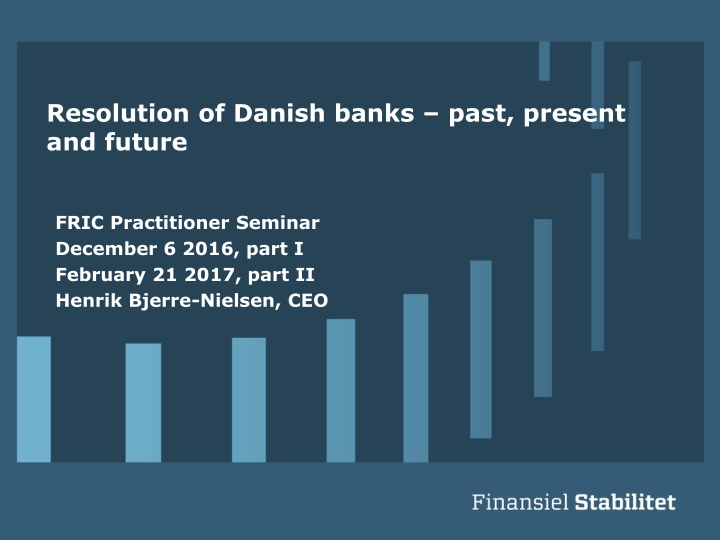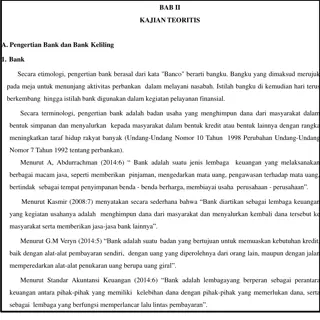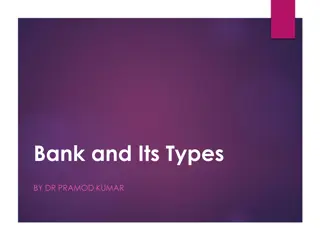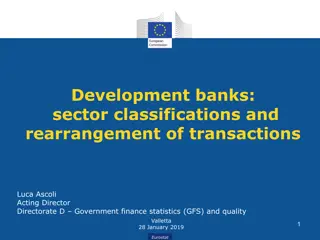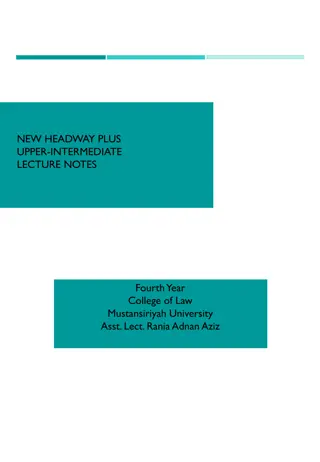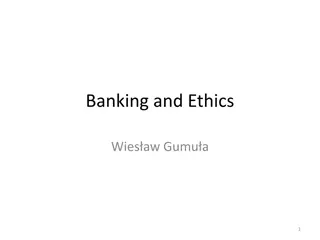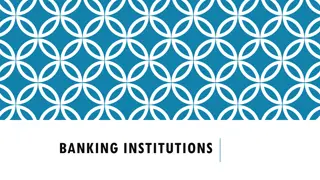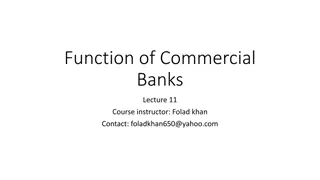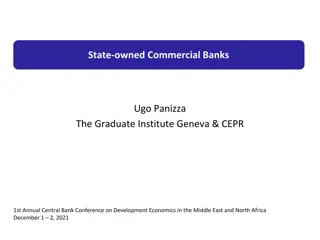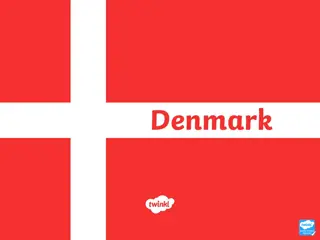The Evolution of Danish Banks: Past, Present, and Future
Explore the fascinating journey of Danish banks through the past, present, and future at the FRIC Practitioner Seminar. Delve into topics such as insolvency regulation, bank resolution, investor roles, and the concentration of financial institutions in Denmark. Gain valuable insights into the essential functions and regulatory challenges faced by banks and financial firms in Denmark.
Download Presentation

Please find below an Image/Link to download the presentation.
The content on the website is provided AS IS for your information and personal use only. It may not be sold, licensed, or shared on other websites without obtaining consent from the author.If you encounter any issues during the download, it is possible that the publisher has removed the file from their server.
You are allowed to download the files provided on this website for personal or commercial use, subject to the condition that they are used lawfully. All files are the property of their respective owners.
The content on the website is provided AS IS for your information and personal use only. It may not be sold, licensed, or shared on other websites without obtaining consent from the author.
E N D
Presentation Transcript
Resolution of Danish banks past, present and future FRIC Practitioner Seminar December 6 2016, part I February 21 2017, part II Henrik Bjerre-Nielsen, CEO
Agenda Banks and other financial firms General insolvency regulation for corporations Restructuring or liquidation Bail-out or liquidation Liquidation costs in banks The role of EU-ban on state aid in bank resolution Banking resolution past present and future Conclusions 2
Banks and other financial firms I The role of banks and other financial firms is to issue (almost) default-free claims to customers Customers include holders of deposits, guaranty and indemnity claims , credit commitments and securities for liquidity reasons (Almost) default-free is equivalent to negligible option to default (information- insensitivity) The default-risk of banks and other financial firms should be assumed by investors Investors include holders of securities for reasons of return, e.g. as owners or holders of junior claims Investors may mitigate risk by diversification A (legal) person may be an investor as well as an customer and a debitor too 3
Banks and other financial firms II Banks and other financial firms are subject to regulation and supervision Financial regulation may be separated into prudential regulation (mitigating default-risk) and conduct of business regulation The same applies to supervision Danish banks are either deposit-taking banks (savings and commercial banks), mortgage credit banks, investment banks (firms) or banking groups Banking groups legally consist of parent companies and subsidiaries, but operationally they act as a single firm 4 banking groups and 2 banks are systemically important financial institutions (SIFI) Very high concentration of Danish banks 4
A simple model for illustration (Merton) Customer claims Customer claims Customer claims Assets Junior claims Investor claims claims Investor Option to default Equity Residual claims 5
General insolvency regulation for corporations Insolvent corporations either must enter into liquidation or be restructured Liquidations generally include: Foreclosure by all secured claims, Stay on all other claims except claims that may be off-set or netted by debtors Sale or wind down of all assets and Pay-out on unsecured claims in line with claims hierarchy Claims hierarchy: Preferred claims, incl. wages Senior claims, incl. claim principals Junior claims, incl. accrued interest Residual claims (equity) 6
Restructuring or liquidation Restructuring is a negotiated alternative to liquidation where: No owner or creditor is worse off (NCWO) Owners and creditors in total save the private costs of liquidation Restructuring is more likely when negotiations are like a cooperative game: Liquidation costs be saved (Almost) symmetric information Limited number of players Adequate time to negotiate Restructuring tools: Capital injection Debt write-off or conversion Sale of business and debt 7
Bail-out or liquidation Bank restructurings are like a non-cooperative game Many players, notably if option to default on customers claims is no longer negligible Asymmetric information as banks are opaque No time to negotiate, notably due to risk of runs in listed, deposit-taking banks Only in case existing owners have incentive to capital injection may banks be restructured Capital injection lowers option to default to the benefit of creditors, however Capital injection may also avoid loss of intangible assets due to liquidation Dilution of capital may increase incentives for individual owners Applying general insolvency regulation to banks imply that in reality the alternatives for failing banks are: Bail-out (government capital injection or guarantees to customers) Liquidation 8
A simple model for illustration (Merton) Customer claims Customer claims Customer claims Assets Junior claims Investor claims claims Investor Option to default Equity Residual claims Liquidation costs 9
Liquidation costs in banks Generally: Going concern value of assets is higher than liquidation value, as banks in liquidation have lost license to write new (profitable) business and have to fire sale assets Fee to liquidator Deposit-taking banks: Customers additionally face liquidity costs due to loss of payment systems, credit commitments and securities trading contributing to credit crunch and further costs Connectedness and contagion may add to that, notably in SIFIs Mortgage credit banks: Customers face liquidity costs due to loss of credit commitments and covered bond trading contributing to credit crunch and further losses Connectedness and contagion may add to that, as they are SIFIs Investment banks (firms): Currently customers are only holders of indemnity claims Conclusions: Additional losses may be avoided if deposit-taking banks and mortgage credit banks are restructured 10
The role of EU-ban on state aid in banking resolution State aid within EU needs approval by the EU State aid to banks may be approved as aid to controlled liquidation or as part of restructuring State aid to banks imply they are considered as failing State aid as a precautionary measure may, however, be approved without banks considered as failing in case of economic disturbance and provided state aid has the form of government capital injection or guarantees Government capital injection and guarantees on market terms is not state aid 11
Banking resolution past, present and future Past: Before the Bank Packages (autumn 2008) Present: The Bank Packages (end of 2017) Future: Post-BRRD (mid 2015) 12
Banking resolution past I General insolvency regulation applicable for banks - with modifications for mortgage credit banks Boards in failing deposit-taking banks had de facto option to: Sell banking activities including all senior claims for price not less than liquidation value of equity and junior claims - without approval from shareholders Transaction could be facilitated with dowry from deposit guarantee scheme, provided dowry was less than loss in case of liquidation Late in period dowry to be provided by other banks jointly (PCA) in order to avoid issues of state aid Banking resolution was manageable as long as a willing buyer could be rapidly identified When liquidity of Roskilde Bank became distressed in the summer 2008, more time was needed 13
Banking resolution past II Joint venture between banks jointly (PCA) and central bank (DN) provided liquidity guarantee to Roskilde Bank to give more time to identify buyer PCA provided junior tranche (limited) and DN senior tranche (unlimited) DN exposure received government guarantee Roskilde Bank pledged to sell banking activities to buyer named by joint venture in case of failure and Roskilde Bank could not identify another buyer willing to pay at least equivalent price Roskilde Bank failed and joint venture set up their own (bridge)bank as no other buyer was identified New bank sold parts where option to write new business had value to other banks and initiated controlled liquidation of the rest 14
Banking resolution present (Bank Package I) During september 2008 liquidity of several banks became distressed. As a result Bank Package I was enacted: Option to deposit-taking banks (PCA-members) of 2 year government guarantee of timely payment on all senior claims Financial Stability Company (FS) set up as administrator of guarantee scheme PCA-members should pay FS DKK 15 bn in fixed fees, DKK 10 bn in first loss tranche and DKK 10 bn in third loss tranche Government exposure was 200 pc. of GDP PCA-members pledged to sell banking activities to buyer named by FS on identical terms as Roskilde Bank Before the end of Bank Package I in september 2010 FS bought banking activities from 8 banks: 7 failing banks (ebh bank, L kken Sparekasse, Fionia Bank, Gudme Raaschou Bank, Capinordic Bank and the Eik Banks), where parts with positive value of writing new business were sold to other banks and controlled liquidation of the rest New Roskilde Bank from the joint venture between PCA and DN Loss for government on guarantees was less than 25 bn received 15
Banking resolution present (Bank Package II) Late 2008 rising concerns of credit crunch and problems of issuing long- term, senior claims in banks led to Bank Package II in early 2009 Option to viable deposit-taking or mortgage credit banks to issue junior claims to government before mid 2009 Option excercised by 23 banks for DKK 46 bn In some cases junior claim included option to issuer to convert claim into equity 5 need to refinance before 2018 Loss on junior claims for government less than interests received Option to viable deposit-taking or mortgage credit banks to issue senior bonds with 3 year guarantees from FS on behalf of government before end 2010 Options issued to 63 banks and excercised by 50 banks for DKK 194 bn All guarantees expired now Loss on guarantees for government less than fees received 16
Banking resolution present (Bank Package III) Concerns of fiscal exposure of continuing 2-year general government guarantee to deposit-taking banks and lacking willing buyers of such banks in case of failure led to Bank Package III in mid 2010 Option to failing deposit-taking banks to sell banking activities to new banking subsidiary of FS. Assets purchased to liquidation values Senior claims assumed for an equivalent value other claims in liquidation Deposit guarantee scheme paid for losses on covered deposits Capital provided by FS, however with guarantee from deposit guarantee scheme Profit after fees to deposit guarantee scheme distributed to claims not assumed Parts of bank with value of writing new business sold to others and controlled liquidation of the rest In case option was not excercised and bank to be liquidated, FS was able to do the transaction with the liquidator 17
Banking resolution present (Bank Package IV) After applying Bank Package III on two banks in 2011 (Amagerbanken and Fjordbank Mors) with losses to senior claims it was decided that eventhough Bank Package was superior to liquidation it needed to be improved with Bank Package IV in autumn 2011. Option for FS to contribute to dowry, provided Contribution was proportional and not higher than the loss for FS in case of resolution according to Bank Package III and The banking activities, where writing new business had value, incl.retail was sold during the resolution weekend FS could only face losses on guarantees issued on behalf of the government Option has been applied 3 times 2 with contributions from FS (Max Bank and Sparekassen stjylland) and 1 with dowry only from deposit guarantee scheme (Sparekassen Salling) Option to prolong guarantees from FS in case of banks merging Option has been applied twice (Vestjysk Bank and Den Jyske Sparekasse) as successor banks) 18
Banking resolution present (Bank Package V) Entering the financial crisis in autumn 2008 FIH was bank #5 owned by Icelandic Kaupthing Bank that soon failed. Danish FSA had not allowed FIH to be exposed to or funded by parent however FIH took no deposits and senior bonds as only source of funding dried up FIH used options in Bank Package I and II guarantee from FS was the largest indiviual up to DKK 50 bn FIH was sold to consortium incl. ATP in 2010 FIH was highly solvent, but struggled with funding and initiated balance sheet reduction In mid 2012 FIH transferred property finance segment to FS-subsidiary (FSPF) in order to mitigate funding risk. Transaction involved state-aid FS received loss guarantee from FIH and FIH Holding FSPF is almost liquidated State-aid case pending regarding government taking its creditor interest into account 19
Banking resolution future (BRRD) Banking Recovery and Resolution Directive (BRRD) supplements European Banking Union Single Supervisory Mechanism and Single Resolution Board Implemented by all EEA-states BRRD aims to mitigate probability of and costs in case of failure Major changes regarding resolution: Mandatory resolution plans and resolution funds financed by banks FS assumes control over failing bank, when in public interest to avoid liquidation Powers are statutory and include write of or conversion of claims included in regulatory capital, sale of business, bridge bank, asset separation, bail-in and contract amendment New mandatory claims hierarchy in liquidations including class of senior claims split into 3 sub-classes, where some deposits get preferred status Mortgage credit banks, investment banks (firms) and international banking groups covered by resolution regulation too Introduction of government stabilisation instruments 20
Banks - from business as usual to exit from resolution Distance to failure or potential failure High Significantly lower Rapidly deteriorating Negative Sufficient State of bank Business as usual Recovery Early intervention Resolution - start Resolution - end Activities Recovery plan drawn up by management and approved by FSA Recovery plan implemented by management Measures decided by FSA include removal of management, plan for renegotiation of debt and temporary administrator FS assumes control if liquidation is only alternative and not in the public interest Control of SIFIs transferred to new owners former creditors Resolution plan drafted by FS and approved by FSA FS implements stabilisation measures, including, provisional valuation, write off and conversion of capital instruments and bail- in to get non- negative net assets. Capital on market terms provided by FS in case conversion of investor claims does not provide adequate regulatory capital. Contingent liquidity provided by FS. Controlled liquidation of other deposit- taking banks after sale of profitable business Potential resolution measures prepared by FS, 21
Banking resolution future (bail-in) Bail-in is statutory write-off or conversion of claims not included regulatory capital Hierarchy of claims in bail-in differs from hierarchy in liquidation as: Some claims are mandatory exempted from bail-in Other claims may be exempted from bail-in on a discretionary basis Such claims get a position as preferred claims Compensation from resolution fund to the extent NCWO-principle is violated Banks must have regulatory capital and sufficient claims eligible for bail-in (MREL) depending on resolution strategy Claims eligible for bail-in should only include other junior claims and new class of claims contractual bail-in instruments - inserted in hierarchy between junior and senior claims in order to avoid to difference in claims hierarchy between bail-in and liquidation. 22
A simple model for illustration, liquidation vs. bail-in (Merton) Liquidation Bail-in Exempted claims Covered deposits Covered deposits Preferred deposits Preferred deposits Assets Senior claims Senior claims Junior claims Investor claims Investor Investor claims claims Option to default Residual claims 23
A simple model for illustration (Merton), bail-in Customer claims Customer claims Customer claims Assets Option to default Junior claims Junior claims Investor claims Converted junior claims Investor claims Equity Other residual claims Residual claims Bail-in Loss Deficit residual claims Option to default 24
Banking resolution future (resolution strategy) Preferred resolution strategy determined in resolution plan, that include enough resolution options for banks to be resolvable When FS assumes control of failing bank it takes resolution actions that are most in line with resolution objectives including: maintaining financial stability to protect government funds continuity of critical functions Preferred resolution strategies: no losses for customers SIFIs restructuring and return to market with former holders of claims subordinated to customers claims as new owners. MREL equivalent to 2*regulatory capital requirement other deposit-taking banks rapid sale of banking activities, where of writing new business has value and controlled liquidation of the rest. Lower MREL investment banks (firms) are likely to be liquidated 25
Banking resolution future (mortgage credit banks) All Danish mortgage credit banks are non deposit-takers currently the only ones in Europe Non deposit-taking mortgage credit banks may be exempted from bail-in and MREL-requirement provided using other resolution powers, or liquidation is in line with resolution objectives Mandatory debt buffer in mortgage credit banks facilitate using other resolution powers, when it does not include senior claims, however debt buffer is determined by legislation and not by FSA decision Modifications to general insolvency regulations in Denmark contributes to lower liquidation costs in mortgage credit banks Danish centralbank advocates mortgage credit banks should not be exempted from bail-in and MREL-requirements Key question: Are mortgage credit bonds customer or investor claims? 26
Banking resolution future (international banking groups) The preferred resolution strategy is parent as resolution entity facilitated by: subsidiary bank issue sufficient eligible claims for bail-in of bank to parent parent issue sufficient eligible claims for bail-in of group to investors Preferrred resolution strategy requires confidence between resolvers in relevant countries 27
A simple model for illustration, groups (Merton) Consolidated group Consolidated group before capital elimination Customer claims Customer claims Assets Assets Junior claims Option to default Equity Residual claims Intra-group claims Intra-group claims 28
Banking resolution future (government stabilisation instruments) Government stabilisation instruments may be used to cover losses: as a last resort to maintain financial stability and to the extent that losses are higher than 8 pc. of total liabilities 29
Conclusions Danish bank resolution has developed sucessfully during the past 10 years making private sector solutions more likely by making restructuring more credible contributed to breaking banks-sovereign doom-loop. Denmark has sustained AAA Resolution regulation of banks has recently been materially harmonised in Europe facilitating resolution of international banking groups Bail-outs of failing banks are only possible in exceptional circumstances Precautionary recapitalisation is more likely 30
